A New Year’s Message from Linda Kohanov
I recently saw Werner Herzog’s Cave of Forgotten Dreams, a film exploring the Chauvet cave paintings in France, some of which are nearly
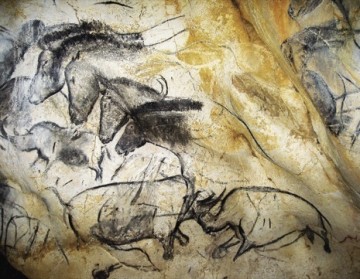
35,000 years old. These astonishingly sophisticated depictions of horses, bulls, cattle, stags, antelope, lions, bears, even rhinoceroses are perplexing in their incredible sophistication and expressive power.
The discovery of this ancient art gallery in December 1994 astonished theorists interested in the evolution of human creativity. As David S. Whitley marveled in his 2009 book Cave Paintings and the Human Spirit: The Origin of Creativity and Belief, these intricate murals were more than 10,000 years older than those discovered at the nearby Lascaux cave, yet “Chauvet cave had art that was not simply on par with the finest Paleolithic examples. It was, by significant margin, the oldest cave art in the world and it dramatically disproved any contention that our human artistic capabilities had evolved, over time, from simple to complex. When art first appeared, it appeared full-blown in a technically and aesthetically sophisticated fashion.”
As Whitley emphasizes again and again throughout his book, “this first art consists of true aesthetic masterpieces—works of art that fully rival our greatest creative achievements, of any time and place.”
And what were these early masters painting in Chauvet and Lascaux (also known as the Sistine Chapel of Prehistory)? Most definitely not people. At Chauvet, only one, vaguely human figure can be discerned: the lower portion of a woman’s body. A nearby image depicts a human-bison hybrid. The vast majority of the paintings are highly realistic, artistically accomplished representations of animals. Horses are the fourth most frequently painted subjects, behind felines, mammoths, and rhinos (yes, a now-extinct species of rhino roamed ice-age Europe!). And yet, these early equines are among the most vividly portrayed animals in the cave, clearly showing individual characteristics and varied facial expressions in striking detail. Many of the lions also show specific facial features capturing intricate moods and behaviors, leading Meg Daley Olmert to come to a startling conclusion in her book Made for Each Other: The Biology of the Human-Animal Bond: The cave artists “knew these animals—not just as a species but as individuals. These were neighbors, close neighbors.” What’s more, she insists, the “impressive detail and graphic skill” of the paintings “tells us those animals were not terribly frightened of us.”
Whitley, an archeologist who writes from a less knowledgeable perspective on animal behavior, had the chance to actually visit Chauvet.
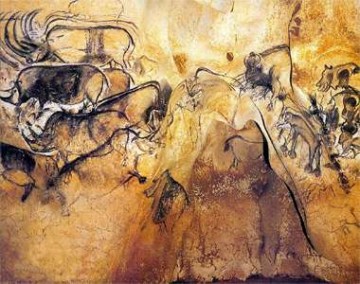
Even he was struck by how two different horses painted in separate alcoves were purposefully set apart from other animals, creating the uncanny impression that these horses were reaching out him. They “approach you, slowly, oblivious, and unmoved by the lions, rhinos, and other animals surrounding them,” he writes; “…they come to you in a stately and unhurried pace.”
Reading Whitley’s words and staring at photos of these evocative paintings in the oversized art book Chauvet Cave: The Art of Earliest Times, I was inspired by a compelling possibility. Having lived with herds of horses as colleagues, teachers, guides, and friends—as sentient, sovereign beings who made requests, reached out to me, communicated clearly, and quite often had their own opinions about things—it struck me that these prehistoric artists were capturing an ancient invitation, that very moment when a horse looked a human in the eye and approached, hinting at a partnership in the making, one that would profoundly change both species in the process.
The plot thickens ten thousand years after Chauvet when it becomes clear that the Lascaux cave artists were even more obsessed with horses. Out of 915 images at Lascaux, horses represent over sixty percent of the recognizable animals, followed by stags at a mere fifteen percent, aurochs and bison each at under five percent, and felines appearing 1.2 percent of the time. Wolves, generally considered to be the first animal willing to be domesticated, don’t even appear in these paintings. And here again, only one human figure abides among a
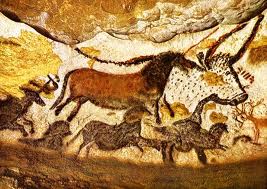
bestiary that scientists now conclude had nothing to do with “hunting magic.” According to Whitley, “animal bones excavated from living areas at the mouths of the caves” revealed that “there was little if any correlation between animals painted and animals eaten.” Since then, he and a few other scientists have promoted the idea that the paintings were evidence of ritual trance states, that shamanism led to the birth of human creativity.
But what if the explanation was a bit more obvious than that? What if the most detailed paintings were ancient portraits of the artists’ favorite animals—and by that I mean individual animals with whom these people were forming increasingly trusting, intensely inspiring, transformational relationships? After all, while archeological evidence of people riding horses doesn’t show up for a good 18,000 years after Lascaux’s artists closed up shop, who’s to say that these people weren’t being called out by the animals themselves, following their lead, moving in harmony with ancient herds thousands of years before human beings developed the technology to confine and restrain the horse?
In my opinion, cave-art scientists are missing an important theory about the sudden emergence of human creativity, one backed by recent research into the evolution of the human-animal bond, my own experiences with horses as agents of inspiration and transformation, and a host of cross-cultural myths about the role of horses in expanding human consciousness and creativity. Greek, Indian, Celtic, Siberian, Middle Eastern, and Native American legends all agree that horses have the ability to carry people back and forth between this world and the “other,” the premiere shamanic act. What if these stories point back to an even more ancient truth, one that civilized men aren’t quite
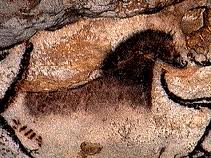
willing to entertain? What if these ancient paintings weren’t so much evidence of trance hallucination or a sudden leap in wholly symbolic thinking? What if they were literally capturing the power and spirit of the times, an era when the animals themselves were luring early humans into a journey of mutual-empowerment, mutual-evolution, and eventually, mutual-domestication?
This in itself, of course, mirrors the role of modern shamans who are considered specialists in bridging the visible and invisible worlds as well as the human and animal realms. I first explored this notion in The Tao of Equus, gaining considerable inspiration from Mircea Eliade’s 1964 book Shamanism and Larry Dossey’s influential Recovery of the Soul.
Among the qualities that made the shaman a cross-cultural phenomenon was the belief “that a kind of collective consciousness bound them together with the animal kingdom,” Dossey wrote. “So intimate was the sharing of the mind with the animals that shamans believed it possible to actually become an animal,” a notion exemplified by the human-animal hybrids depicted in early cave art at Chauvet, Lascaux and other prehistoric sites.
Dossey goes on to observe that “in the nonlocal, collective consciousness that wrapped man and animal together, it was not always the man who took the initiative in actualizing it. Sometimes the first overture was made by the animal. This is most obvious in the call of the shaman…and in his initiation….In the tradition of the Buryat shamans the tutelary animal is called the khubligan, a term that can be interpreted as ‘metamorphosis.’”
The cave art at Chauvet and Lascaux represents an intense and quite sudden metamorphosis of human consciousness. As David Whitley muses in Cave Paintings and the Human Spirit, “I cannot help but wonder about the centrality of the horse in this apparently shamanic art: Why? And, of course, what does the horse mean?”
What if, deep in those ancient caverns, prehistoric artists were documenting the very first call of the shaman, creating intricate monuments to, deep in those ancient caverns, prehistoric artists were documenting the very first call of the shaman, creating intricate monuments to the very first khubligans? And what if the spirits of those four-legged initiators are calling modern men and women to remember, to open our jaded civilized hearts and feel, once again, the collective consciousness that still binds us to the animal kingdom? Would we, in 2012, be able to change our destructive habits and reclaim the power of the herd?
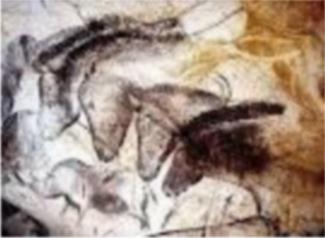
Sending best wishes for much joy, inspiration, and success to you, your families and your herds in the coming year!
Linda
A Special Holiday Offer
Now through January 2, the new web symposium The Power of the Herd is offered at a special rate.
“For years,” Linda says, “I’ve been looking for ways to create a special on-line course for people who either can’t attend an Epona workshop or have recently returned from a clinic with us and want to reinforce their skills, translating them more effectively into human contexts. People have also told me they wished they had an at-home course to offer Epona-based skills to friends, business colleagues, and family members. This fall, I’m happy to say, I found the perfect inspiration and partner in this effort, Mark Mottershead, who developed the HorseConscious website, originally inspired by Stormy May’s wonderful film The Path of the Horse.”
Many people had written to report that they’d enjoyed Mark’s HorseConscious interview/conversations with Linda over the last two years. Together, the two have created an in-depth, ongoing, online symposium based around the cutting-edge research and skills featured in Linda’s upcoming book The Power of the Herd, due to be published in fall 2012.
“This book has gone much deeper than I expected,” Linda reports. “As I was doing the research, I found the information exciting, mind-blowing actually, and I just couldn’t wait to share it with people. The tools, concepts and historical perspectives will be useful at home, school, work, and most definitely in forging a stronger relationship with horses. And for people who have attended my workshops, and/or seminars led by Epona Approved Instructors worldwide, The Power of the Herd Web Symposium offers a deeper look at the research behind the tools and horse-facilitated activities that many have called life changing.”
The symposium has already attracted a growing international community of people who are sharing their experiences and ideas on the POH website.
“As an Epona approved instructor with an equine-assisted coaching practice, I can’t say enough about how delighted I am to be part of Linda’s latest symposium on The Power of the Herd,” says Sandra Sell-Lee, founder of Equine Soul Care. “Both Linda and Mark have allowed a web class to emerge that is a perfect example of collaborative leadership in action, the topic of Linda’s next book. Linda’s generosity in sharing her pre-published chapters, as well as access to herself, creates a space for learning that is rare. Instead of just reading the book, and listening to a lecture, Mark engages Linda in conversations, fed by questions and comments from the participants, which are generative and creative – I feel as though I am part of something where, together, we are all evolving and learning and creating NEW knowledge! Linda’s openness to BE a collaborative leader and Mark’s willingness to create a web process that supports real-time collaboration for everyone who participates are truly awe-inspiring. And, there’s no limit on who can participate! Come and enjoy the fun! Come help change the world!”
To sample the offerings and join the symposium, go to www.poweroftheherd.com. Note that you can sample the first chapter and lesson, and the accompanying conversations, before you register. Also, for those considering attending a 2012 workshop with Linda Kohanov, Power of the Herd symposium members will receive ten percent off any single workshop she leads.
For more information on upcoming Epona workshops worldwide, check out the main Epona website at www.eponaquest.com.
Happy Holidays!